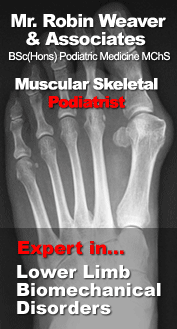 Injection Therapy
Injection Therapy
1. Ostenil
Ostenil® is a solution containing hyaluronic acid. It is injected into the space in the joint that contains synovial fluid and works by restoring the normal balance between the breakdown and production of hyaluronic acid. This effect of Ostenil® means that it can decrease pain and stiffness and improve the other symptoms of osteoarthritis.
The hyaluronic acid in Ostenil® is very pure and is manufactured using a process called fermentation. It contains no animal proteins, which means that it is very unlikely to cause an allergic reaction. Ostenil® has been given to thousands of patients and has not been found to cause any serious side effects. The exact make-up of the hyaluronic acid in Ostenil® has been carefully chosen so that it is as effective as possible in treating osteoarthritis.
What can I expect if I decide to have treatment with Ostenil®?
If you decide to have treatment with Ostenil®, it will be injected directly into the joint affected by osteoarthritis. This will be done once a week for 3 weeks until you have had 3 injections.*
You will probably not notice any benefits immediately after the first injection, but you should gradually start to feel less pain and stiffness over the next few weeks. The improvement in your symptoms should last for several months, depending partly on the number of injections you have. You can expect the benefit from three injections to persist for up to 9 months.
Once the effects of the first course of injections wear off, you can, if you choose, have another. After that, you can continue to have new courses of injections whenever necessary.
* In some cases your clinician may give up to 5 injections.
Questions and Answers
Ostenil® is a treatment for the symptoms of osteoarthritis. It can be used in the knee, or in any of the other joints in the body that are classified as 'synovial'. This
document gives you some basic information about synovial joints, about what happens when you get osteoarthritis and about Ostenil®. If you have any questions
after you have read this leaflet, please ask your doctor.
What is a synovial joint?
A synovial joint is one in which the ends of the bones are enclosed in a capsule containing a thick, slippery liquid called synovial fluid. The capsule is made of strong, fibrous tissue and is lined with a membrane called the synovial membrane. The bone ends are covered in a smooth layer of a tough, rubbery substance known as cartilage.
The synovial fluid in the joint capsule has four important functions:
- it keeps the bones slightly apart, protecting their cartilage coverings from wear and tear
- it absorbs shocks, again protecting the cartilage
- it lubricates the joint, helping it to work freely and easily
- it acts as a filter, letting nurtrients reach the cartilage, but blocking the passage of harmful cells and substances.
The most important component of synovial fluid is a substance called hyaluronic acid. It is this substance that lets synovial fluid perform its four different functions all at the same time. Most of the joints in your body are synovial joints. Good examples, besides the knee, include the hip and the shoulder.
What happens in osteoarthritis?
The hyaluronic acid in synovial fluid does not stay there for a whole lifetime, but is continuously broken down and replaced. Normally, there is an exact balance between the breakdown of old hyaluronic acid and the production of new hyaluronic acid. In osteoarthritis, however, this balance is disturbed and breakdown happens faster than production. As a result, the synovial fluid becomes more watery and stops working properly.
Due to the change in the synovial fluid - and for other, more complex reasons - the cartilage in the joint gradually wears away. In some places, in fact, the cartilage may eventually disappear altogether. The thinning of the synovial fluid and wearing away of the cartilage lead to the symptoms of osteoarthritis, which include pain, stiffness and swelling.
Osteoarthritis develops as people get older and is present in almost everybody over the age of 60 (although not everyone in this age group has bad symptoms). Osteoarthritis of the knee or hip may also occur in younger people, usually (but not always) because these joints have been overloaded. Possible causes of overloading include sports, jobs involving a lot of lifting and carrying, too much bodyweight and abnormal joint development.
The information above was kindly provided by Trbchemedica.
2. Steroid Injections
Introduction
If you have an inflamed or swollen joint, or if you have pain or inflammation near a joint, your Podiatrist may inject a steroid preparation into the affected area. It is known as a local injection because it acts only in that area.
• Injecting into a joint is called an 'intra-articular' injection.
• Injecting near a joint but not actually into it is called a 'peri-articular' injection (meaning 'near the joint') or 'soft tissue' injection.
What steroid preparations are available?
Podiatrists in the UK with the relevant training can administer Methylprednisolone, this is a stronger preparation and tends to be less soluble, remaining in the joint for longer. Benefit from the stronger drugs is associated with a slightly increased risk of local side-effects.Your Podiatrist will also decide whether to inject a local anaesthetic at the same time. This does not reduce inflammation but will allow almost immediate temporary pain relief.
Why might I have a steroid injection?
For foot conditions such as neuromas and plantar fasciitis, the injection is given to reduce inflammation, swelling and pain. Although osteoarthritis is mainly a 'wear and tear' condition, steroid injections are often given for this as well. This is because there is often some inflammation present and pain and swelling may be reduced.
Do I need to rest after the injection?
It is often recommended to rest a weight-bearing joint as much as possible for the first 1–2 days after an intra-articular injection. If impracticable, then it would be sensible to at least avoid strenuous exercise for the first couple of days. If you are also having physiotherapy, the physiotherapist may be keen to give more intensive mobilisation treatment after the injection, while the joint is less painful.
How long will the steroid injection take to work, and how long will it last?
This depends to some extent on the preparation used. The short-acting soluble steroids give relief within hours and should last for at least a week. The longer-acting less soluble steroids may take a few days to become effective but may give benefit for 2 months or longer. If an anaesthetic has also been given, pain relief should occur within minutes but will usually wear off quickly (within half an hour, unless the anaesthetic selected is long acting). Many injections are quick and easy to perform and are associated with only minimal discomfort. Therefore local anaesthetic is not always used.
What are the possible risks or side-effects?
Side-effects are very unlikely. However between 2-10 % people notice a flare in their joint pain within the first 24 hours after an injection. This usually settles on its own within a couple of days. Very rarely (authors site a one in forty thousand and one in seventy seven thousand chance) infection might be introduced into the joint at the time of an injection. Therefore if the joint becomes more painful and hot you should consult your doctor immediately, especially if you feel unwell.
Occasionally with intra-articular and peri-articular injections some thinning or change in the colour of the skin may occur at the injection site. The risk of side-effects, particularly thinning of the skin, is greatest with the stronger preparations such as methylprednisolone but the risk overall is small. Local steroid injections may sometimes cause facial flushing or interfere with the menstrual cycle. Other steroid-related side-effects, seen with steroid tablets are rare unless injections are given frequently.
What other treatments could be used instead of local steroid injections?
For conditions affecting the big toe joint there is a preparation called Ostenil which can be used instead of, or combined with steroid injections.
If the injection has worked, how often can it be repeated?
There is general agreement that if an injection is very helpful, and other treatments are either inappropriate or less effective, then the injection may be repeated every 3–4 months. However, there is a small risk of frequent injections causing cartilage damage, especially in weight-bearing joints such as the knee and big toe joint. In practice it is rare for patients to receive more than two steroid injections.
Do I need any special checks while having steroid injections?
No special checks are required.
May I take other medicines along with steroid injections?
You may take other medicines with steroid injections. However, if you are taking anticoagulants such as warfarin, it is less likely that you will be offered an injection because of the risk of bleeding into the joint. If you are taking anticoagulants you should mention this to the person giving the injection to ensure that s/he is aware of this.
Can I have immunisations after a steroid injection?
Yes, you can have immunisations while being treated with steroid injections.
May I drink alcohol after a steroid injection?
There is no particular reason for you to avoid alcohol after a steroid injection.
Do steroid injections affect fertility or pregnancy?
Single injections of steroid should not affect fertility or pregnancy. However, if you are pregnant you should discuss this with your doctor before receiving a steroid injection.
What about breastfeeding?
Joint injections are rarely needed when breastfeeding. Single injections should not be harmful when breastfeeding, but if you are breastfeeding it would be best to discuss this with your doctor before receiving a steroid injection. |

